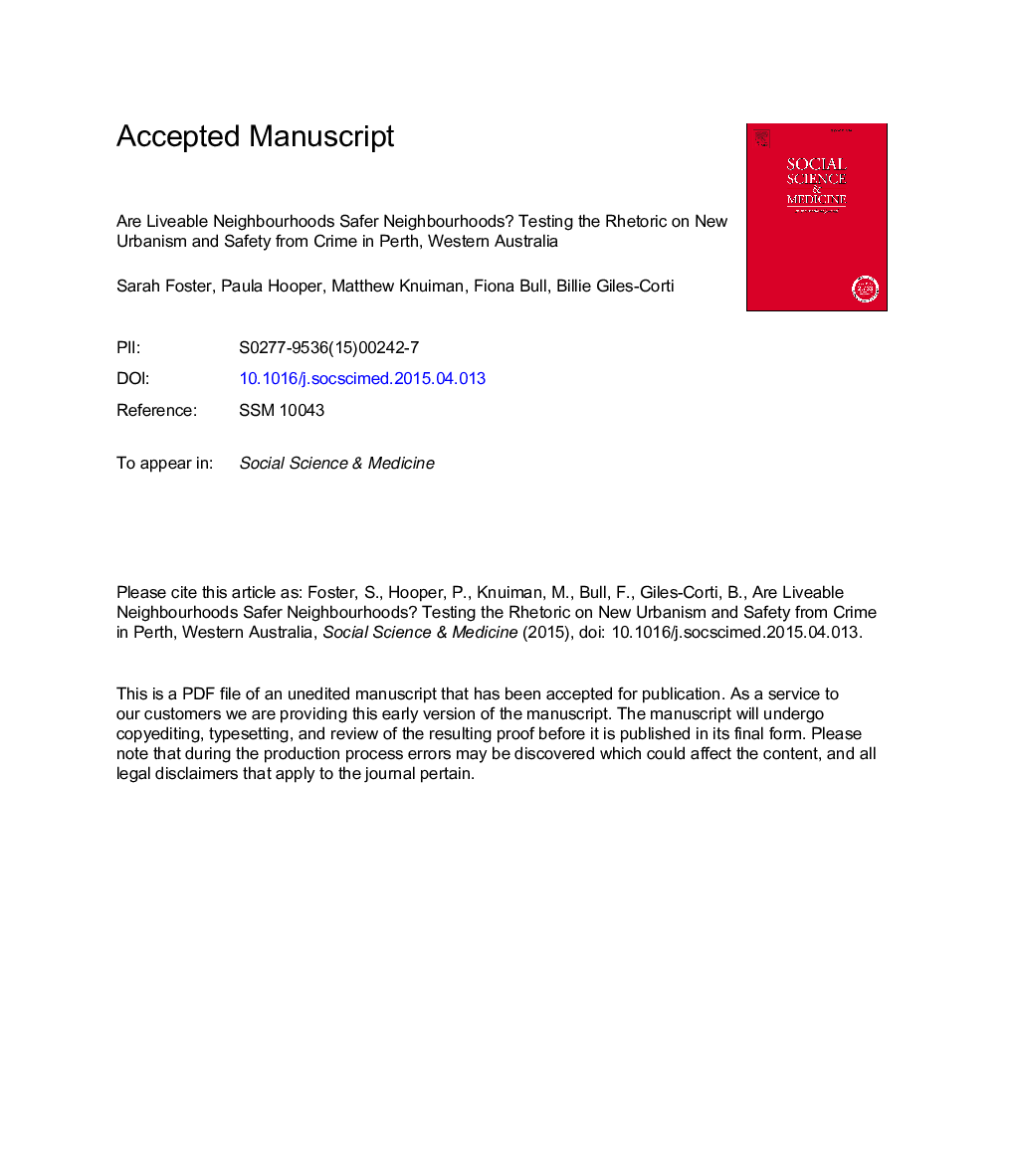| کد مقاله | کد نشریه | سال انتشار | مقاله انگلیسی | نسخه تمام متن |
|---|---|---|---|---|
| 7329620 | 1476005 | 2016 | 29 صفحه PDF | دانلود رایگان |
عنوان انگلیسی مقاله ISI
Are liveable neighbourhoods safer neighbourhoods? Testing the rhetoric on new urbanism and safety from crime in Perth, Western Australia
ترجمه فارسی عنوان
آیا محله های زندگی می کنند که محله های امن تر هستند؟ تست سخنرانی در مورد شهرنشینی جدید و ایمنی از جرم در پرت، استرالیا غربی
دانلود مقاله + سفارش ترجمه
دانلود مقاله ISI انگلیسی
رایگان برای ایرانیان
کلمات کلیدی
شهرنشینی جدید، قربانی کردن، جرم، ایمنی، سیاست برنامه ریزی، محیط ساخته شده،
موضوعات مرتبط
علوم پزشکی و سلامت
پزشکی و دندانپزشکی
سیاست های بهداشت و سلامت عمومی
چکیده انگلیسی
New urbanism advocates for the design of the compact, pedestrian-friendly, mixed-use developments thought to promote walking. New urbanist proponents also claim their developments incur other social and wellbeing benefits, including enhanced safety from crime; however there is limited empirical evidence supporting this. We tested the premise that new urbanism inhibits crime by examining the relationship between compliance with a planning policy based on new urbanism and: (1) residents' reports of victimisation; and (2) objective crime measures. RESIDE Participants (n = 603) who had lived in their new developments for 36 months completed a questionnaire that included items on their experiences of victimisation. Detailed measures quantifying the degree to which these developments (n = 36) complied with the policy requirements were generated in Geographic Information Systems. Logistic regression examined the associations between policy compliance and self-report victimisation, and negative binomial log-linear models examined area-level associations between compliance and objective crime. For each 10% increase in overall policy compliance, the odds of being a victim reduced by 40% (OR = 0.60, CI = 0.53-0.67, p = 0.000). Findings for the individual policy 'elements' were consistent with this: for each 10% increment in compliance with the community design, movement network, lot layout and public parkland elements, the odds of victimisation reduced by approximately 6% (p = 0.264), 51% (p = 0.001), 15% (p = 0.000) and 22% (p = 0.001) respectively. However, while policy compliance correlated with lower odds of self-report victimisation among residents, the associations between compliance and development-wide (objective) crime were positive but non-significant. The results indicate that planning policies based on new urbanism may indeed deliver other social and wellbeing benefits for residents, however they also hint that the design of an 'objectively' safe place may differ from the design of a 'subjectively' safe space.
ناشر
Database: Elsevier - ScienceDirect (ساینس دایرکت)
Journal: Social Science & Medicine - Volume 164, September 2016, Pages 150-157
Journal: Social Science & Medicine - Volume 164, September 2016, Pages 150-157
نویسندگان
Sarah Foster, Paula Hooper, Matthew Knuiman, Fiona Bull, Billie Giles-Corti,
